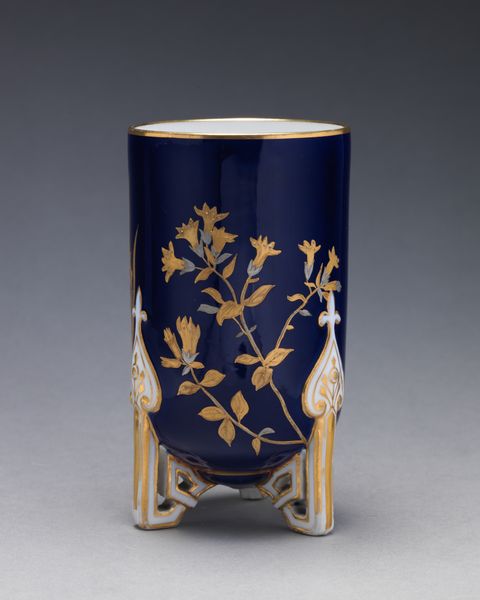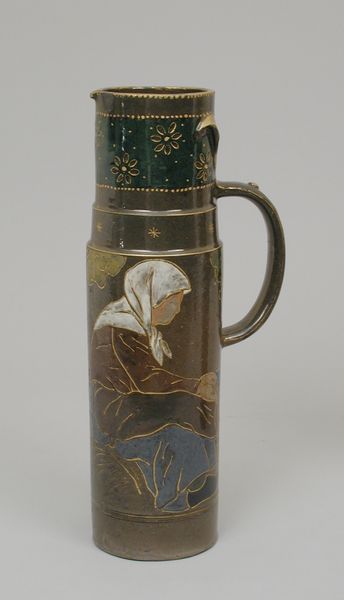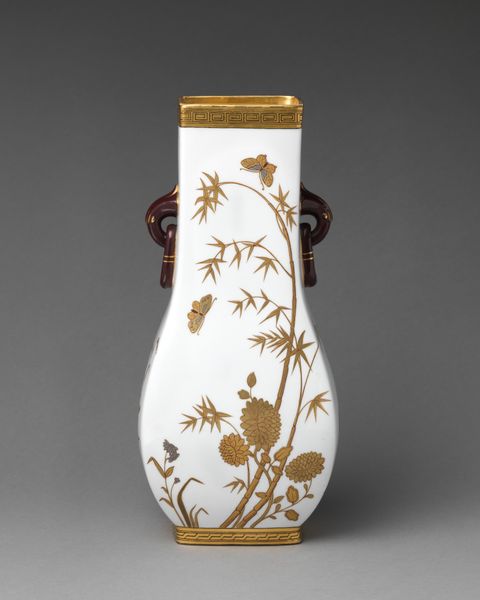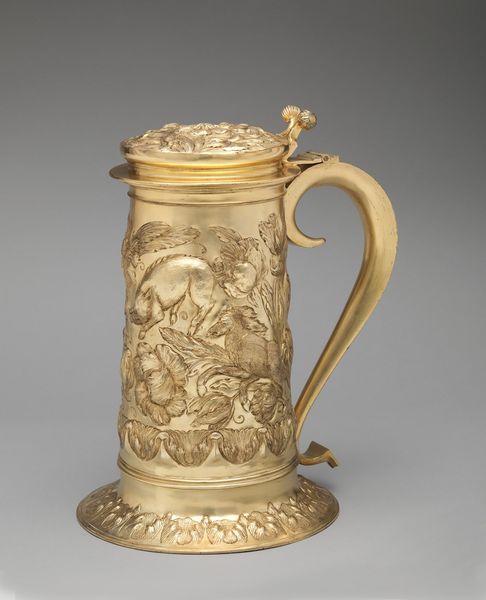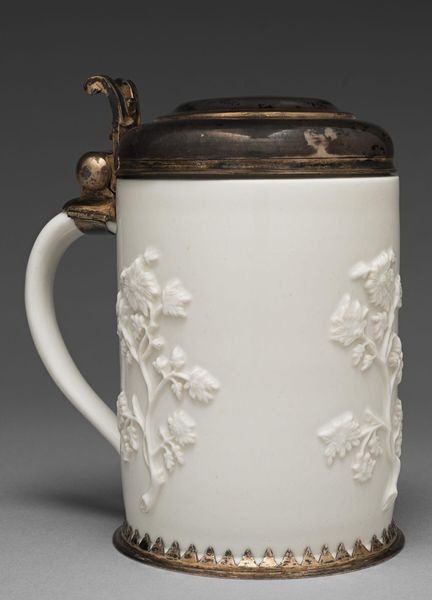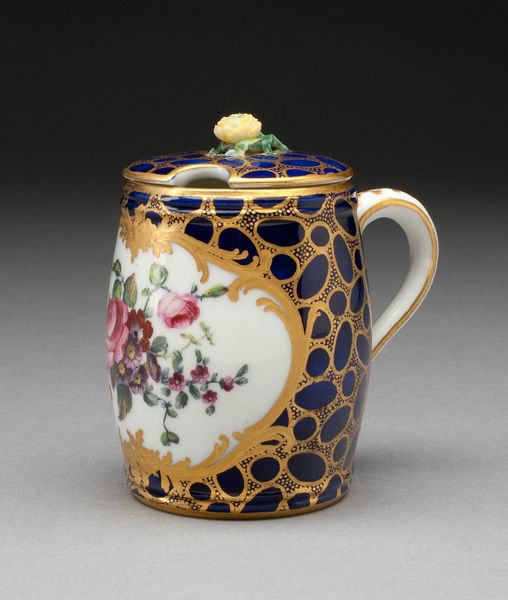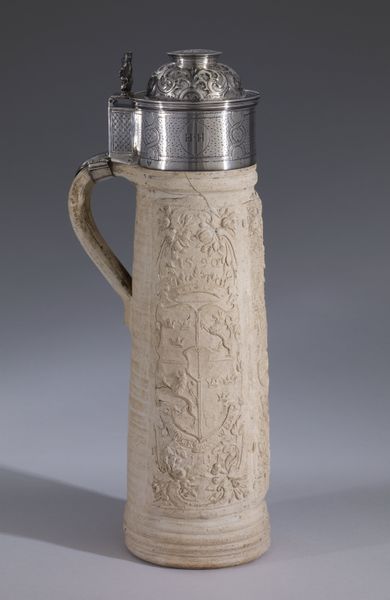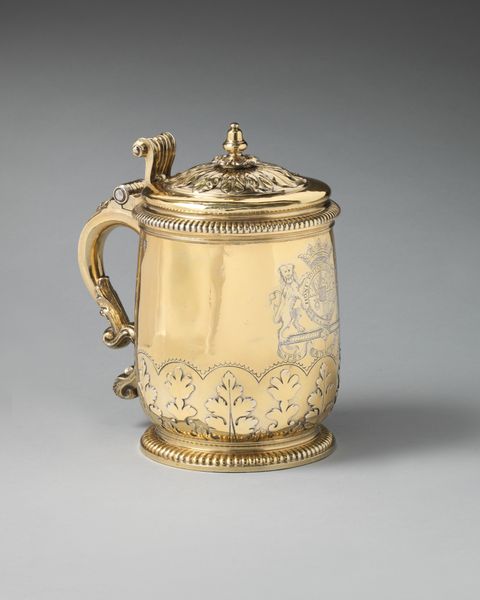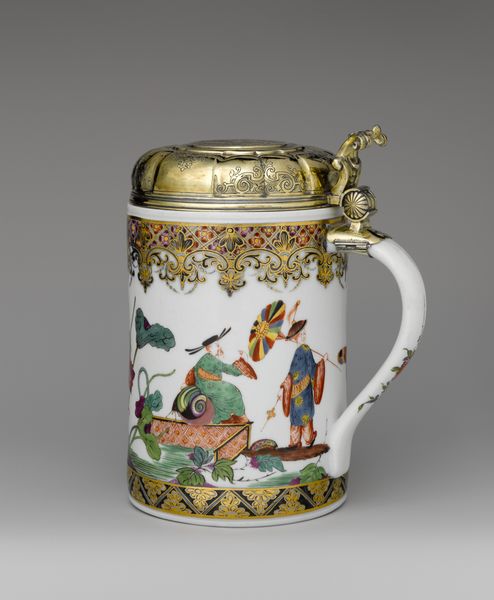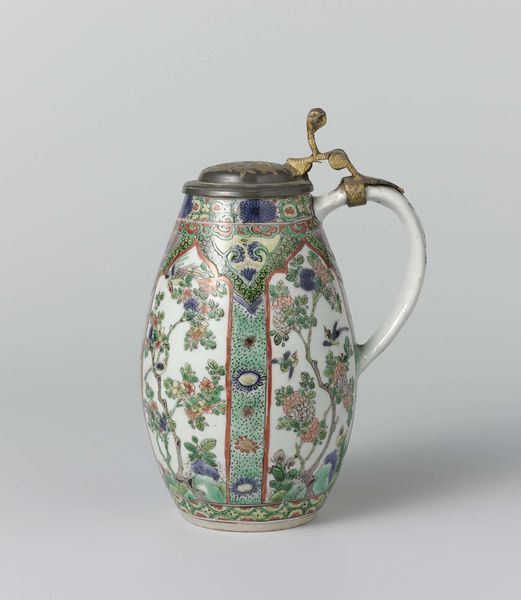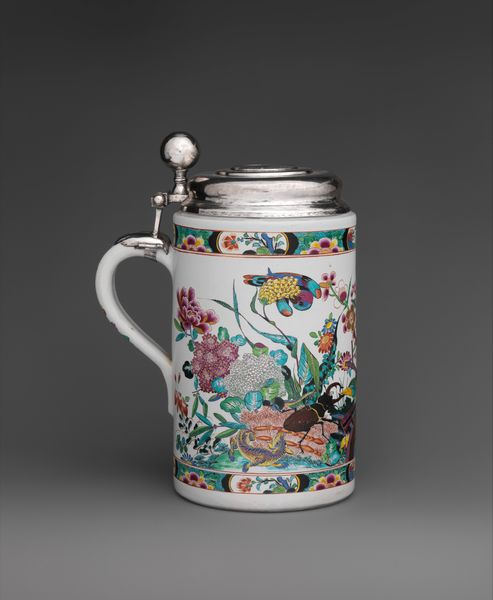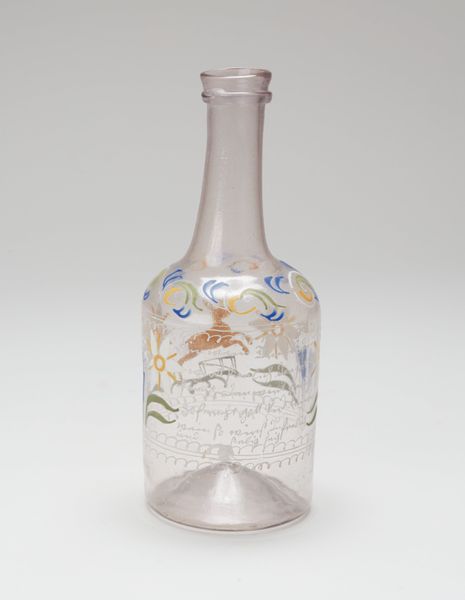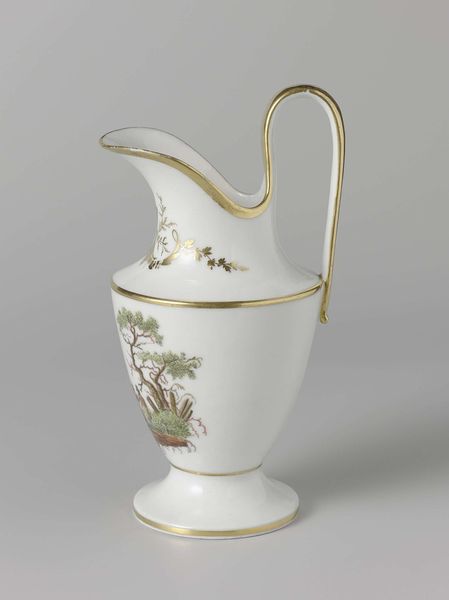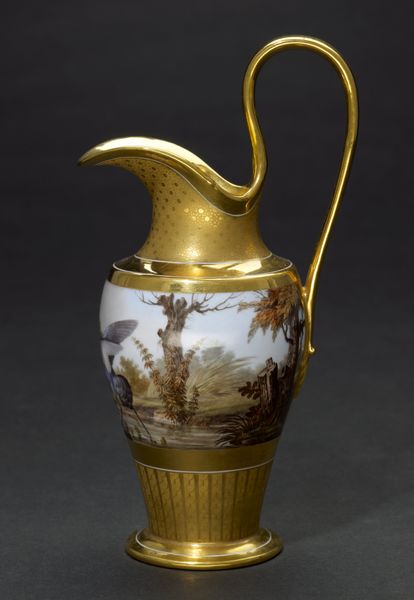
ceramic
#
ceramic
#
vessel
#
stoneware
#
decorative-art
Dimensions: 29.2 × 14.9 cm (11 1/2 × 5 7/8 in.)
Copyright: Public Domain
Curator: Here we have a pitcher crafted around 1885 by the Chesapeake Pottery, now residing at The Art Institute of Chicago. Editor: My first impression is one of restrained elegance; the tall, slender form combined with the floral decoration creates a distinctly refined object. Curator: Indeed. It's crafted from ceramic, and the restrained decorative art style showcases an interesting interplay between function and aesthetic embellishment, especially when one considers the role of potteries in late 19th century industry. Editor: Agreed, and look at how the gold bands accentuate the form! The floral motif in silver and bronze introduces a delicate rhythm across the body of the stoneware, creating a hierarchy within the work's various parts. The handle especially, with that sharp right angle and empty space. Curator: The application of metallics here is worth further investigation. Such adornment suggests that while ostensibly functional, this pitcher catered to a bourgeois desire for decorative tableware—reflecting specific production methods as much as popular taste at the time. We should ask what that says about status. Editor: From a purely compositional stance, though, observe how that metallic sheen, which from an aesthetic point-of-view almost makes one think of mirrored highlights in Baroque paintings, nonetheless activates its surface with dynamic tonal gradations. And this contrasts brilliantly with the flatness of the matte areas of stoneware that define this piece. Curator: It would also be interesting to place the Chesapeake Pottery itself within the socio-economic structures of its time. Where did they source their clay, their labor, their artistic talent? How does this pitcher compare to mass produced objects in that period, and can we even consider that period ‘mass produced’ in the way we conceive of it today? Editor: Questions that would illuminate more perspectives, certainly. As for the pitcher itself, I’m captivated by the sheer compositional force with which these lines draw upward—almost towards some unseen vanishing point. Curator: Analyzing the interplay of material realities alongside social history gives us such rich insight here. I am curious to know about where the source materials came from. Editor: It has offered a lovely focal point for understanding shape, tonality, and line, offering visual insights I did not initially conceive of when looking at this vessel.
Comments
No comments
Be the first to comment and join the conversation on the ultimate creative platform.
